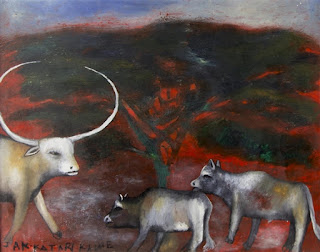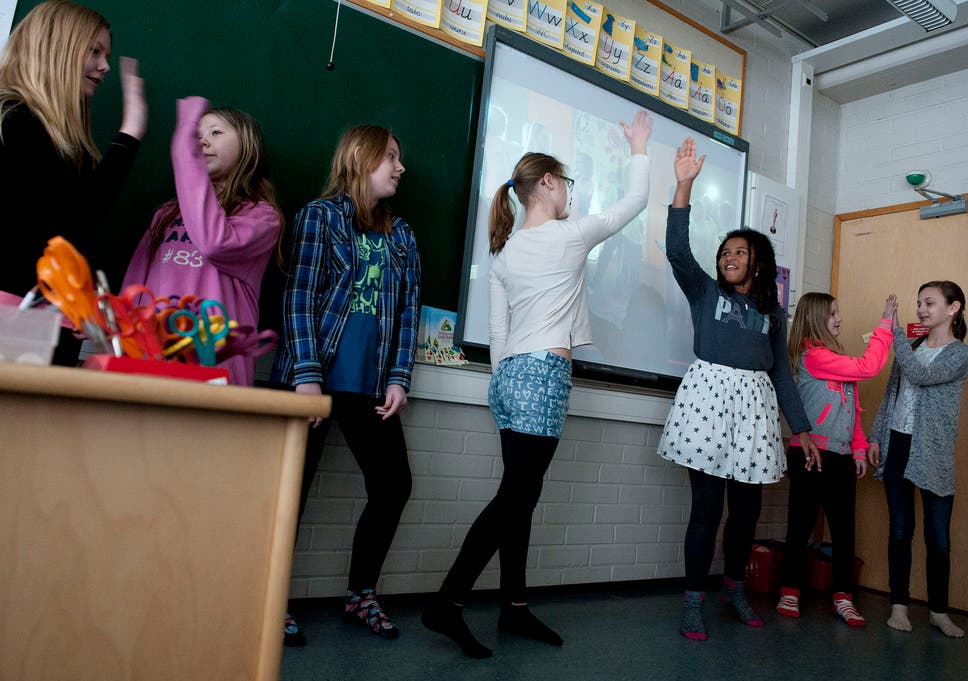AGONY AND EMPTINESS AS EAST AFRICAS GRAND MASTER JEDI, JACK KATARIKAWE RESTS HIS PAINTING BRUSHES AND COLOUR PALLETE IN NAIROBI.
In 2016, I was tasked to research and write about contemporary Ugandan Artists. I was cautioned to situate my research within the period stretching from the 1940s through the 60s to the late 90s. My findings indicated that the name Jack Katarikawe appeared more than any other in most published local and foreign Journals, Catalogues, newspapers, books and periodicals about contemporary African Art.
That is how i was baptized with new knowledge concerning Jack Katarikawe. This new knowledge about Jack Katarikawe led to permanent withdrawal from my earlier assumptions that since I had mastered the perfect interplay of western principles and elements, I had less interest in reading about artists who had not gone through formal training. I must confess that in my blindness, the first time I looked at Katarikwes work, I didn’t see much of the ingredients that defined Art with a capital. (I am not alone in this category of Artists who do not bother to look outside their box). Little did I know that in this universe, God secretly served wisdom and luck to all created beings in doses. Following this secret formula, people like Kataritawe received the right dosage and luck from the creator who they call Ruhanga in Kataritawes native language. Katarikawe must have realized these two God given gifts at an early age and he quickly applied the icing sugar of Determination and hard work to his cake of wisdom and luck.
I was humbled to find out that Kataritawes work had been exhibited and collected in more than one hundred museums and galleries across the different six continents that make up our world. I wrote all those findings plus making a thorough analysis of his painting style which I submitted as part of the fulfillment for an award. I was told that Katarikawe lived in Nairobi and I kept on thinking I would pay him a visit and interview him with or without invitation. This never happened.
On the 25th/10/2018. I received a shocking notification from the president of Uganda visual artists and designers association (U.V.A.D.A) concerning the death and send off program for this Grand master Jedi Jack Katarikawe. (Jedi is nowadays used to refer to someone who possesses a special skill in doing something) The UVADA president organized a special send off and public viewing of Jack Katarikawe’s body at Nommo Gallery in Kampala before leaving for Kabale, the final resting place. The function was attended by a few Ugandan Frontline Artists, Katarikawe’s family members and the Art fraternity from Kenya. The reasons for taking Katarikawes body to Nommo Gallery for public viewing can be explained by the UVADA President and Uganda’s soldier Artist Gen. Tumwine.
Runyanzhuka Village the birth place and final resting place of the legendary master Katarikawe is located in the Kigezi region of south west Uganda in Kitumba county off the Kabale Katuna- Rwanda boarder, past Rushoroza girls school.
I am laboring to give a detailed explanation of Runyanzhuka village on the presumption that you can never understand the true life and style/ work of an artist unless you know his birth place and the circumstances under which he was nurtured.
Jack Katarikawe was born in 1938 and raised in the mysterious landscape of Runyanzhuka, a dramatic conglomeration of breathtakingly beautiful, neatly laid out terraces covering thousands of hectares of high rising flat topped and round topped hills.
The thousands of hectares of heavily cultivated hills must have registered a permanent kind of squared or rectangular canvass picture in Katarikawe’s memory. This inspired his desire to become a painter who must have wished to earn a living from making and selling paintings on canvasses that emulated the shapes and colours of the large tapestry of cultivated fragments that surrounded his village.
The Geographers have always guessed that thousands of years before Katarikawe’s great ancestors settled in Runyanzhuka, there must have been one major break where a fault in the underlying parent rock caused a section of the highland to suddenly drop and create a series of spectacular valleys. Today, what we see is that, not only are the valleys steep sided, but the faults cut deep into the floor and create winding cliff lined valleys within a valley. The valleys are filled with dense human settlements and jungle like vegetation. Sensational slow moving mixtures of fog and smoke occasionally rise from underneath the valleys causing an Eldilla. (an Eldilla is a mysterious smoky manifestation of the Holy Spirit in medieval philosophy!). This slow moving Smog causes a blur effect on distant hills and it is seen in Katarikawe’s paintings.
Katarikawe also benefits greatly from the highly sophisticated anthropological advantage of his native Kiga culture. This is in terms of language, orthography, folklore and other unique forms of oral literature that define his ancestry. It is a known fact that up to this day, the Banyakigezi have remained at the frontline as far as promotion and preservation of unique forms of cultural expressions like stories, proverbs, idioms, riddles, dance and song is concerned.
The tendency of combining human and animal forms in most of Katarikawes paintings enables the artist to explore his inner world of emotions, to identify the metaphysical echoes of love, lust, pain, fear, and anger against which all living things are powerless.
This subject matter of Katarikawe’s paintings therefore originates from his rich culture and it is against that backdrop that the UVADA president requested Sana Gateja, a highly respected artist and personal friend of Katarikawe, to deliver UVADAS condolence message in the local language. (Certain things are better said in our local languages than the English language). The Kenyan fraternity was represented by Lady Annabelle, a self-taught Artist who passed through the hands of Katarikawe. Lady Annabelle invited the director of the national museums of Kenya Beatrice Wangeshi who eulogized Katarikawe as a legend.
It it is true that more than ten of Katarikawe’s paintings are permanently exhibited in the Frankfurt museum in Germany and more than fifty others in UK, USA, Australia and Canada, then Katarikawe has served as Uganda’s ambassador to the outside world more than any other Ugandan. This means that he deserved a hero’s welcome and a state funeral .I have always lamented that there is lack of a clear policy regarding the visual arts in this country, Does this mean that the story of Katarikawe may temporarily fade?
According to Amos Wekesa Uganda Tourism guru and president of Great Lakes Safaris, in 2016 alone, Uganda hired three PR firms in the US, Gernany and UK whose job is simply talking about how beautiful Uganda is. A lot of tax payers’ money is spent on these PR firms who simply copy and paste a few camera shots of Uganda’s flora and fauna, use their laptops to manipulate a few digital clips, create a blog or some kind of “website” and use it as evidence to convince Uganda tourism board to sign their huge cheques. People like Jack Katarikawe and other legendary Ugandan artists who have sold more of their works abroad such as David Kibuuka, Noah Wamala Nyanzi, Dan Ssekanwagi and many others have been practically marketing and talking about the beauty of Uganda through their works for more than fourty years. Why pay the PR Firms and bury our heads in the sand when it comes to recognizing Visual artists? Is it because the PR firms are “smarter” and know more about “marketing” than the visual artists?
Now, let the Uganda Tourism board be born again and realize that in the beautiful hills of Kitumba in Runyanzhuka – Kabaale, lies a great man called Jack Katarikawe whose works will continue to market Uganda to the outside world. To wash itself clean, let the Uganda Tourism board liaise with the director of the National museums in Kenya and the president of Uganda visual Artists and designers Association. The three bodies will get in touch with Katarikawe’s family members who have already announced a grand project, the Jack Katarikawe foundation. This foundation can be developed as a tourist destination in addition to the much publicized gorilla permits or “hanging fruits” in Kibale National park, Bwindi, and queen Elizabeth National Parks.
If the Uganda Tourism board thinks that this is unnecessary, someone from Gremany, UK or Australia will come to Uganda one day and will be the first to recognize the final resting place and the contribution of Katarikawe towards contemporary East African Art.
IBANDA JOSHUA
FINE ART HISTORY POLITICS MUSIC CULTURE.










